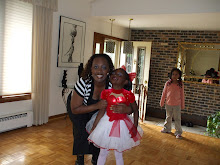

 (mother at the spot where her son was found hanging from a tree)
(mother at the spot where her son was found hanging from a tree)Reading the book was gut wrenching and sad. The disregard for human life is sicken. Slavery is not over. Yes in the legal sense we can't just go after another culture and take them and make them do things against their will. It is 2008, we have domestic violence where women are held captive by their mate mentally, physically, emotionally, and spiritually. Sometimes rape and torture by someone that they knew and loved. What about all the gang violence and black on black crime just killing one another over a pair of sneakers or a dollar trying to get to the American Dream, what about human trafficking? Women and girls taking from the home under false pretenses that will become a model or actress and sold in the sex game. What is the hot commodity in all of these, the human being, the human soul. What price does one have to pay to get to the top? Or to be in control?
Approximately 33 million1 or 15% of all U.S. adults, admit that they were a victim of domestic violence. Furthermore, 6 in 10 adults claim that they know someone personally who has experienced domestic violence.
Among all adults, 39% say that they have experienced at least one of the following, with 54% saying that they haven’t experienced any:
Called bad names (31%)
Pushing, slapping, choking or hitting (21%)
Public humiliation (19%)
Keeping away from friends or family (13%)
Threatening your family (10%)
Forcing you to have sexual intercourse without consent (9%)
Called bad names (31%)
Pushing, slapping, choking or hitting (21%)
Public humiliation (19%)
Keeping away from friends or family (13%)
Threatening your family (10%)
Forcing you to have sexual intercourse without consent (9%)
On the average, more than three women are murdered by their husbands or boyfriends every day.1
92% of women say that reducing domestic violence and sexual assault should be at the top of any formal efforts taken on behalf of women today.2
1 out of 3 women around the world has been beaten, coerced into sex or otherwise abused during her lifetime.3
1 in 5 female high school students reports being physically and/or sexually abused by a dating partner. Abused girls are significantly more likely to get involved in other risky behaviors. They are 4 to 6 times more likely to get pregnant and 8 to 9 times more likely to have tried to commit suicide.3
1 in 3 teens report knowing a friend or peer who has been hit, punched, slapped, choked or physically hurt by his/her partner.4
As many as 324,000 women each year experience intimate partner violence during their pregnancy. 5
Violence against women costs companies $72.8 million annually due to lost productivity.6
Ninety-four percent of the offenders in murder-suicides were male.7
Seventy-four percent of all murder-suicides involved an intimate partner(spouse, common-law spouse, ex-spouse, or boyfriend/girlfriend). Of these, 96 percent were females killed by their intimate partners.7
Most murder-suicides with three or more victims involved a "family annihilator" -- a subcategory of intimate partner murder-suicide.Family annihilators are murderers who kill not only their wives/girlfriends and children, but often other family members as well,before killing themselves.7
Seventy-five percent of murder-suicides occurred in the home.7
92% of women say that reducing domestic violence and sexual assault should be at the top of any formal efforts taken on behalf of women today.2
1 out of 3 women around the world has been beaten, coerced into sex or otherwise abused during her lifetime.3
1 in 5 female high school students reports being physically and/or sexually abused by a dating partner. Abused girls are significantly more likely to get involved in other risky behaviors. They are 4 to 6 times more likely to get pregnant and 8 to 9 times more likely to have tried to commit suicide.3
1 in 3 teens report knowing a friend or peer who has been hit, punched, slapped, choked or physically hurt by his/her partner.4
As many as 324,000 women each year experience intimate partner violence during their pregnancy. 5
Violence against women costs companies $72.8 million annually due to lost productivity.6
Ninety-four percent of the offenders in murder-suicides were male.7
Seventy-four percent of all murder-suicides involved an intimate partner(spouse, common-law spouse, ex-spouse, or boyfriend/girlfriend). Of these, 96 percent were females killed by their intimate partners.7
Most murder-suicides with three or more victims involved a "family annihilator" -- a subcategory of intimate partner murder-suicide.Family annihilators are murderers who kill not only their wives/girlfriends and children, but often other family members as well,before killing themselves.7
Seventy-five percent of murder-suicides occurred in the home.7
Life after the Congo: we are still losing more women to domestic violence than we did during the slave trade. It seems as if we are going backwards not forwards.
National Domestic Violence Hot line: 1-800-879-SAFE
BLACK ON BLACK CRIME STATISTICS
While African Americans comprise 12% of the U.S. population, 45% of all murder victims in 2002 were African American, 91% of whom were killed by African Americans. Nationally, homicide is the leading cause of death for black men and second leading cause of death for black women ages 15-24. There have been over 250 homicides reported over the last 5-6 years in Pulaski County. United States spends an average of over $4.5 billion on emergency and physical/occupational therapy associated with crime-related injuries/deaths.
No matter how we slice it someone is still making money off the black man's death or destruction. Think about what 4.5 billion dollars could of did for the schools?
Life after the Congo is a little scary we took away the slave ships and replaced it with guns, verbal and physical abuse just to get to where we think we need to be.
http://www.pauljusticepage.com/ Geonicide of the black male







